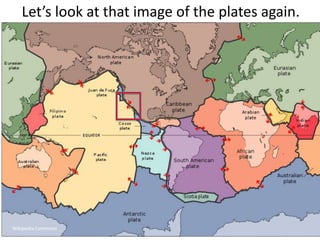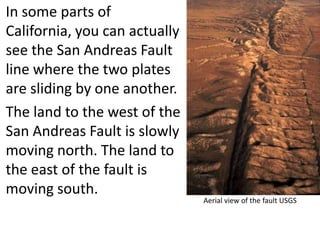The document discusses how plate tectonics and the movement of tectonic plates creates different landforms on Earth. It explains that plates can move together, apart, or side by side, and each type of movement results in distinct landforms. Plates colliding form mountains like the Himalayas. Plates pulling apart form underwater mountain ranges like the Mid-Atlantic Ridge. Plates sliding past each other cause earthquakes along faults like the San Andreas Fault. Some volcanoes form from hotspots in plate interiors, like the Hawaiian Islands.





























































